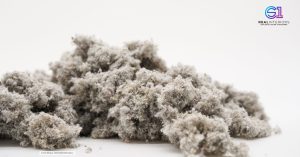Blown Insulation vs. Rolled or Batt Insulation

Choosing the Right Insulation for Your Home
When you install insulation in your home, you will face several important decisions. These choices will determine how effective the insulation is in maintaining a comfortable temperature throughout the year. One of the most crucial decisions is selecting the right type of insulation. The most common options are blown-in insulation, batts, and rolls. While professional contractors, like CS1 Real Interiors Inc., can guide you in making this choice, we believe it’s important for you to understand the differences between these options. Whether you are insulating a home or a commercial building, knowing the distinctions between blown-in insulation, batts, and rolls will help you choose the best option for your needs.
Blanket, Batt, or Roll Insulation
Blankets, also known as rolls or batts, are a flexible type of insulation designed for areas with standard spacing and easy access. The standard spacing refers to the width of joists and wall studs, which the rolls and batts match. These types of insulation may also be used in non-standard spaces, but they will require cutting to fit. Available in standard, medium, and high-density options, batts and rolls are made from fiberglass, rock wool, and other mineral or natural fibers. Some blankets come with a vapor barrier, typically in the form of foil or paper facing.
When comparing blown-in insulation to rolled and batt types, remember that blanket insulation doesn’t require special equipment. However, it can be challenging to install in non-standard or irregularly shaped spaces.

Blown-In Insulation

Blown-In vs. Batt Insulation: Key Differences
The first difference between blown-in and batt insulation is that blown-in insulation is a loose-fill type, while batt insulation is a flexible blanket. Blown-in insulation comes in bags and is made from materials with varying amounts of recycled content. These materials include loose-fill fiberglass, which contains 30% glass, mineral wool with 75% recycled content, and cellulose, made from recycled newspapers. Among these, cellulose offers a higher R-rating and is generally less expensive than fiberglas






